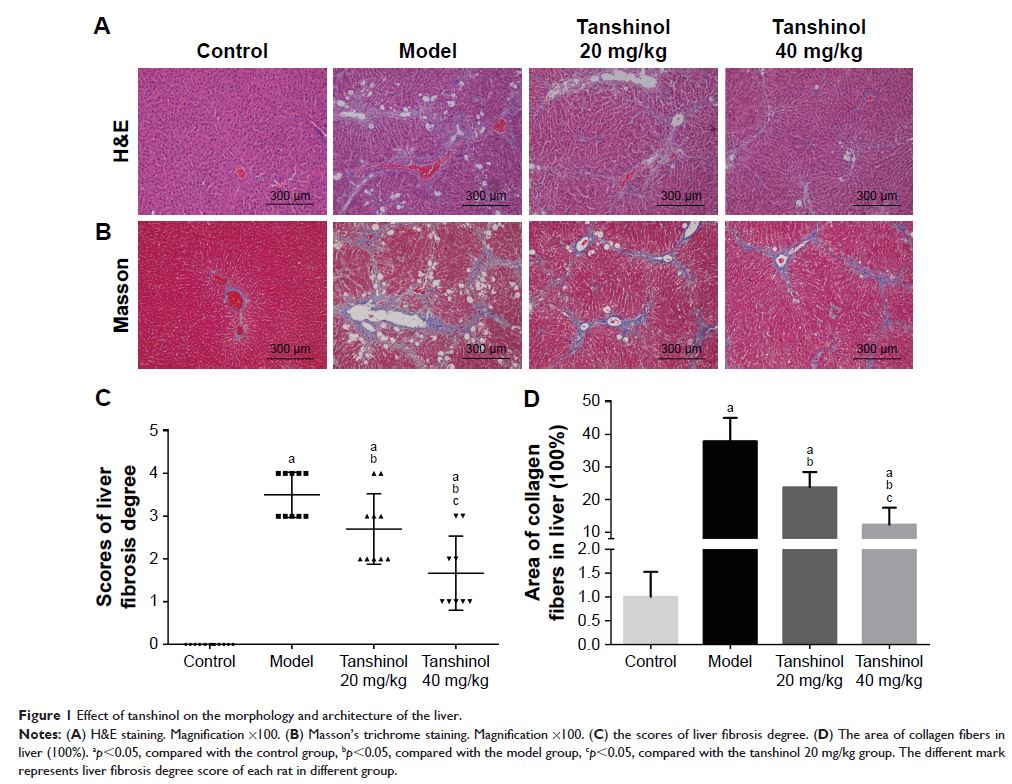108985
论文已发表
注册即可获取德孚的最新动态
IF 收录期刊
- 3.4 Breast Cancer (Dove Med Press)
- 3.2 Clin Epidemiol
- 2.6 Cancer Manag Res
- 2.9 Infect Drug Resist
- 3.7 Clin Interv Aging
- 5.1 Drug Des Dev Ther
- 3.1 Int J Chronic Obstr
- 6.6 Int J Nanomed
- 2.6 Int J Women's Health
- 2.9 Neuropsych Dis Treat
- 2.8 OncoTargets Ther
- 2.0 Patient Prefer Adher
- 2.2 Ther Clin Risk Manag
- 2.5 J Pain Res
- 3.0 Diabet Metab Synd Ob
- 3.2 Psychol Res Behav Ma
- 3.4 Nat Sci Sleep
- 1.8 Pharmgenomics Pers Med
- 2.0 Risk Manag Healthc Policy
- 4.1 J Inflamm Res
- 2.0 Int J Gen Med
- 3.4 J Hepatocell Carcinoma
- 3.0 J Asthma Allergy
- 2.2 Clin Cosmet Investig Dermatol
- 2.4 J Multidiscip Healthc

丹参酚通过调节 Nrf2/HO-1 和 NF-κB/IκBα 信号通路改善 CCl4 诱导的大鼠肝纤维化
Authors Wang R, Wang J, Song F, Li S, Yuan Y
Received 11 December 2017
Accepted for publication 15 March 2018
Published 17 May 2018 Volume 2018:12 Pages 1281—1292
DOI https://doi.org/10.2147/DDDT.S159546
Checked for plagiarism Yes
Review by Single-blind
Peer reviewers approved by Dr Justinn Cochran
Peer reviewer comments 2
Editor who approved publication: Dr Sukesh Voruganti
Abstract: Tanshinol, a water-soluble component isolated from Salvia miltiorrhiza Bunge , has a
variety of biological activities involving anti-fibrotic effect. However, the
exact role and the underlying mechanisms remain largely unclear. This study
mainly focused on the anti-hepatic fibrotic activities and mechanisms of
tanshinol on carbon tetrachloride (CCl4)-induced liver fibrosis in rats via anti-oxidative and
anti-inflammation pathways. The rats were divided into 4 groups as follows:
control, model, tanshinol 20 mg/kg, and tanshinol 40 mg/kg. Except for the
control group, CCl4 was used to induce liver fibrosis processing for 8 weeks,
meanwhile rats in tanshinol groups were intraperitoneally injected with
additional tanshinol. Control group simultaneously received the same volumes of
olive oil and saline. The potentially protective effect and mechanisms of
tanshinol on liver fibrosis in rats were evaluated. The serum levels of alanine
aminotransferase, aspartate aminotransferase, and total bilirubin were
obviously lower in the tanshinol treatment groups related to model group.
Compared with the model group, the levels of hyaluronic acid, type IV collagen,
Laminin (LN), and procollagen III peptide (PIIIP) in serum were significantly
decreased after tanshinol treatment. Furthermore, tanshinol could regulate
Nrf2/HO-1 signaling pathway and increase the level of superoxide dismutase
(SOD) and glutathione peroxidase (GSH-Px), and also decrease the level of
malondialdehyde (MDA) to against damage induced by oxidative stress.
Simultaneously tanshinol could regulate nuclear factor kappa B signaling
pathway to inhibit expression of inflammation factors, including transforming
growth factor-β, tumor necrosis factor-α, Cox-2, interleukin-1β, and
interleukin-6. In summary, our research demonstrated that tanshinol has
protective effect on CCl4-induced liver fibrosis via inhibiting oxidative stress and
inflammation, which may be associated with the regulation of nuclear factor
erythroid2-related factor 2/hemeoxygenase-a and nuclear factor kappa
B/inhibitor of kappa B alpha signaling pathways.
Keywords: liver fibrosis, tanshinol, oxidative stress, inflammation, Nrf2,
NF-κB
